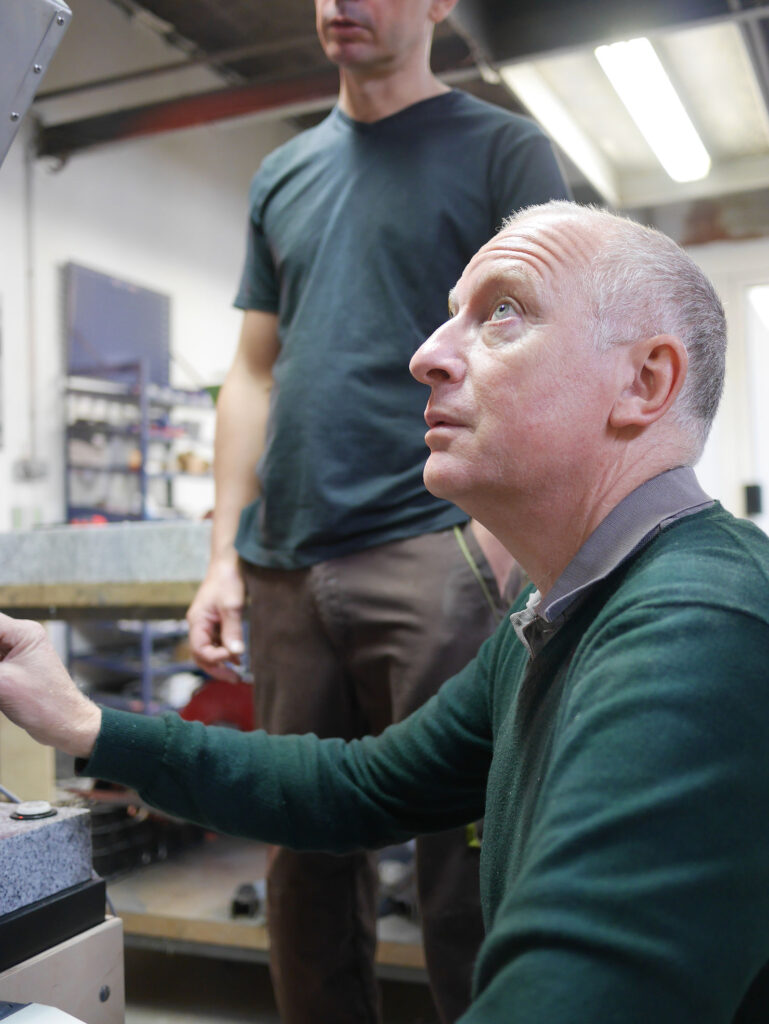Why is training essential?
The Astrié mill lets you produce exceptional flour. It works in a completely different way to traditional stone mills and roller mills.
The seed is no longer crushed by a grinding system: it is completely unrolled.
And that changes everything when it comes to the quality of your flour: you get a wholemeal flour with a pronounced flavour that’s particularly nutritious: rich in proteins, amino acids, minerals and vitamins.
To do this, the mill has to work in a very specific way: that’s why you need to be able to integrate each stage of the process, to be efficient and produce the flour you want! Rice, chickpeas, soft wheat, spelt, rye, buckwheat, wheat, durum wheat, buckwheat, chestnuts, maize: as long as your cereal is dry enough, you can unroll it all using the Astrié mill!

Basically, the principle is quite simple: you place the wheat (or the cereal of your choice) in the hopper: the grain is then transported and distributed by a mechanism between the two millstones.
Micrometrically adjusting the distance between the two millstones allows you to unroll your grain, free of its indigestible husk (the bran). The milled grain then falls directly into the sieve, then into the sifting mill.
During your training, you will learn to :
- Understanding the flow of grain through the mill
- Understand how to change the sieve in your Astrié mill
- Understand how to use the extraction and bagging options to boost your output
- Understand how to use an additional sieve to produce several types of flour
- How to adjust the mill output
- How to adjust the gap between the two millstones
- Understand how to power your mill
- Understanding how to produce gluten-free flour in compliance with health standards
- How to maintain and clean your Astrié mill

One project, one course
There’s a training course for every project: the advice you’re given must be totally individualised, since it will depend on the use you intend to make of your mill.
Your Astrié mill training will depend on a number of factors such as :
- The type of flour you want to produce: T 80, T110, T130, the sieves differ depending on the type of flour you want. We can advise you on these choices beforehand.
- The cereal you want to process into flour: you may need to adjust the gap between the millstones, or choose a sieve with a larger or smaller mesh opening, so as not to lose any extraction rate
- The optimisation and efficiency you want to achieve: extraction and bagging options allow you to optimise your yield, and you need to learn how to use them optimally depending on your project and objectives
- Making gluten-free flour: to set up a gluten-free flour production project, you have two options: buy two mills, and learn how to replace them, or buy a second Astrié mill dedicated solely to gluten-free flour production – we discuss this in this article (How can I equip my Astrié mill to make both conventional and gluten-free flour?)
Training you to get started
Using an Astrié Mill is simple. It’s this simplicity that we want to preserve at all costs by respecting Pierre and André Astrié’s invention.
Buying a mill that perfectly meets your needs is one thing… But succeeding in using this mill effectively on a daily basis is exactly what we want for you!
To succeed in using it correctly, your manufacturer must be able to give you comprehensive, individualised training to introduce you to the good practices that will help you produce a quality grind.

These tips and step-by-step instructions, under real-life conditions, will help you to get to grips with your professional flour mill with peace of mind, and without any false notes!
Ideally, you should take this course when you come to collect the mill that has been made specifically for you. By combining the two, no time is wasted, and there’s no room for improvisation. You can discuss with the manufacturer all the points that may raise questions when using the mill, so as not to hamper your flour production on the farm!
Now you understand why training to use an Astrié mill can be useful! It will enable you to set up your project more peacefully: accompanied from A to Z, you will be able to test your cereal in the mill in the presence of the Astrié mill manufacturer, and make the necessary adjustments with him, to be more productive!


